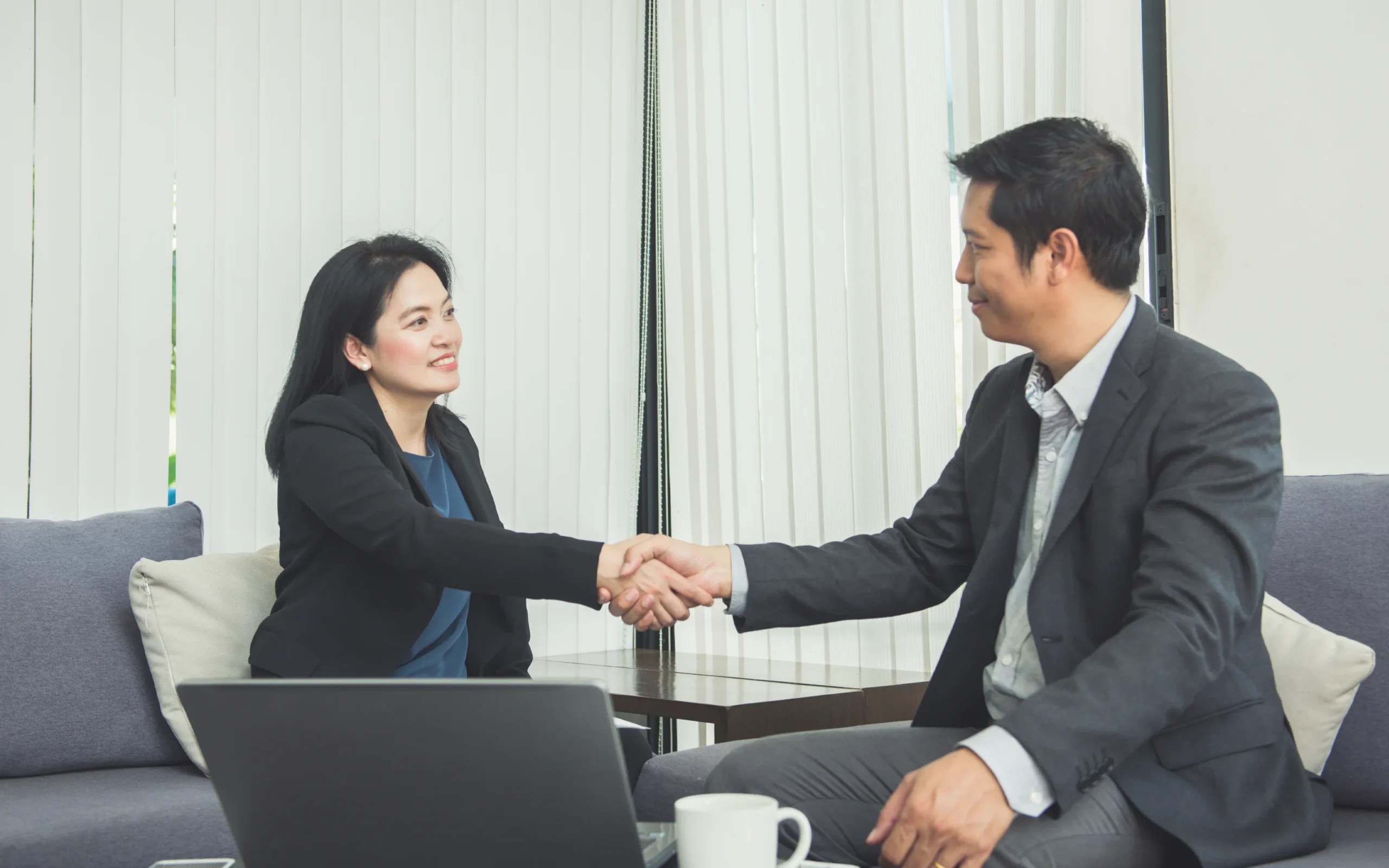
B2B companies are always looking for ways to attract high volumes of quality leads. While having many leads is a good thing, your sales team can have a difficult time determining which leads to follow up and which ones to drop. Besides, sales readiness varies from one lead to another. This is where a sound lead scoring system comes in handy.
With such a system, your team can categorize leads based on where they are in the purchase journey and focus their energy on the best opportunities rather than waste time on low-quality leads. They can prioritize leads depending on the likelihood to buy, the timeline for making a purchase, and the quantity of purchase.
In this article, we explain lead scoring, why it’s critical for your business, and provide a step-by-step guide for setting up a lead scoring system for your company.
What is Lead Scoring?
Lead scoring refers to the process of placing numeric values on leads to determine their sales-readiness. Leads can be scored based on varying attributes, including their online interactions with a brand, engagement with its website, and the professional details they share. Scoring leads helps businesses to know the extent to which potential buyers have engaged with their brand. Scoring leads enables sales and marketing teams to prioritize leads that are likely to buy from your company, which increases conversion rates.
How Does Lead Scoring Benefit Your Business?
Sales teams engage prospects based on the information they have about them. Lead scoring provides sales teams with this information, enabling them to determine which leads to focus on and the best way to engage them.
It also allows your company to test assumptions it may have about its target audience and the sales process. This is because the lead scoring process reveals how well you understand your customers and their behavior patterns. Another important aspect of scoring leads is standardizing how your business evaluates leads. Sales and marketing teams use a common language to discuss lead quality and quantity
When marketing teams have a numerical value of how critical each lead factor is, they can adjust their marketing campaigns to target specific factors to generate leads that match the existing lead scoring criteria. Marketing teams have a chance to study the kind of messages that quality leads respond to. With this information, they can determine the kind of messages the best leads respond to and refine marketing campaigns to attract more of those.
How to Create a Lead Scoring System for Your Business?
Step 1: Determine Minimum Requirements for Your Customers
The first step in setting up a lead scoring system for your company is to determine the minimum requirements leads must pass to become customers. These are essential qualifications each customer must meet. Demographics to consider here could include:
- Age – e.g. customers must be 18+ years old
- Geographic Location – e.g. customers must be from the US
With these requirements, your sales team doesn’t spend time on leads that have no chance of becoming customers.
Step 2: Identify Typical Customer Traits
If you’re familiar with your current customer base, this step will be easy. Unlike step one where the focus is on minimum qualifications, this step is about determining traits of your current customers that can help you determine the right leads. These traits could include firmographics like:
- Company size e.g. 100+ employees
- Industry e.g. Tech, health, food etc
- Annual revenue eg. $100+ million
Prospects with the same traits as your current customers are likely to be a better fit for your products or services than those that don’t.
Step 3: Define Your Ideal Lead
An ideal or ‘hot’ lead represents the perfect customer and should earn the highest score on your lead scoring system. When defining ideal leads, you consider the qualities and traits that differentiate them from other leads. Talk to your sales team for insights about this. In B2B sales, examples of ideal lead qualities may include:
- A specific budget size
- Likely to purchase within a short timeframe
- Say in the purchase decision-making process
Clarifying ideal lead qualities makes it easy to identify the best leads for your business and informs the approach your sales team takes.
Step 4: Determine Which Lead Behaviors You’ll Track
The purpose of this step is to identify leads who are most interested in your products or services and highly engaged with your brand. A good place to start is to prepare a list of all possible behaviors your leads can demonstrate. Some lead behaviors that are worth tracking include:
- Opens Email
- Forwards Email
- Clicks Email Link
- Replies Email
- Fills web contact form
- Shares social content
- Requests for Company Contact
- Visits web blog page
- Visits case study page on website
- Visits multiple web pages on website
- Downloads content assets
- Requests for product demo
- Signs up for free trial
- Signs up for eNewsletter
- Registers for webinar
- Attends webinar
- Attends company event
Some behaviors will be more important than others- assign a value to each, regardless of how small that value will be.
Step 5: Develop a Lead Categorization Criteria
As your target audience goes through the customer journey, they perform actions that indicate their level of interest. The actions they take can vary depending on the nature of the lead generation campaign. Categorizing leads allows you to group them based on their level of interest and sales-readiness. Here are the major B2B lead categories:
- Prospect – Refers to any person who takes action to access a free resource that your company offers e.g. downloading a content asset or watching a video
- Leads – Are prospects who engage with your marketing content and share contact information using a lead capture form. Marketing content may include playbooks, newsletters, whitepapers, case studies, videos, and podcasts among others.
- Marketing Qualified Leads (MQLs) – These are leads who take further brand engagement action like sharing phone information, registering for events, or watching online demos.
- Sales Qualified Leads (SQLs) – These are MQLs who take actions that demonstrate sales-readiness. Such actions may include attending events and making direct contact with company staff, requesting direct face-to-face meetings and/or detailed demos, and enquiring about product or service pricing. Sales Qualified Leads should be nurtured carefully and immediately to boost conversion.
Step 6: Develop a Custom Lead Scoring Model
When it comes to B2B lead scoring, a one-size-fits-all approach isn’t the most effective, your leads will have varying needs and preferences. This step involves developing a lead scoring model for qualifying leads as they move through your funnel. Most B2B companies use a 0 to 100 point scale to score leads. These points are distributed across different lead categories. For the purpose of our example, we’ll use the following thresholds to categorize leads:
- <10 Points – Prospects
- 10 – 30 Points – Leads
- 30 – 60 points – MQLs
- 60+ points – SQLs
About 68% of marketers use a demographic/behavioral mix to assign lead score. scores to leads. Leads are first scored based on firmographic traits then progressively, they are scored according to their behavior.
Assign higher points to attributes or actions that result in conversion. You can do this by analyzing your marketing metrics to determine the impact each action or attribute has on the sales funnel.
For instance, leads who participate in a webinar should get more points than those who download a content asset from your website. Get more insights from your sales team, they’d have ideas on other actions that influence conversion.
Here’s a sample of a B2B point system showing points for different attributes/actions:

From this example, points are assigned to leads based on their behavior. Leads who click on blog posts get 10 points, those who register for webinars show higher intent and get 20 points. Leads who match your ideal buyer persona are the best fit, so they get 30 points and those below your company’s revenue target lose 15 points. If you have a lead with all these traits, he would score 45 points (10+20+30-15) right away. Based on the point threshold above, this lead would be an MQL.
Once a lead passes a minimum point threshold, they are qualified. This is the idea behind lead scoring. You can award points to other activities, like filling and submitting lead capture forms, viewing pricing pages, scheduling demos, and attending webinars.
Once you have a point system in place, compare the values with actual conversions. If you have actions that show higher conversions than your baseline, include them in your point system.
For instance, if leads who complete lead magnet forms have a 20% close rate, award a 20 points to any lead who submits the form. Do this for each attribute to ensure that your values reflect actual lead quality.
Quick tips for Assigning Values to Lead Attributes:
- Assign low scores for simple actions like opening emails, social shares, website sessions, and clicking on links.
- Assign higher scores for proactive actions that indicate interest, intent, or urgency like registering for demos and downloading pricing guides.
- Assign high scores for face-to-face interactions and direct inquiries, those have high value.
- You can move leads that take a series of high-value actions directly to SQLs.
Step 7: Refine Your Scoring System for “Fit”
Review your ideal customer profile and identify the key traits your customers must have. These could include annual revenue, job title, industry, and location. Review your lead scoring system to ensure it aligns well with the key traits in your ideal customer profile. For instance, you can assign leads additional points based on factors like deal size, location, contact’s job title, and verticals. Based on your current customer portfolio, consider structuring deal sizes into three categories for easy scoring.
Improve the Scoring System As You Go
Your lead scoring model will continue to improve as you continue to use it. Review its performance regularly – every 30 days, in the beginning, to find out whether there were low-scoring leads that converted or highly-scored leads that did not convert. This kind of review enables you to improve lead-scoring rules and adjust your point distribution criteria.
Conclusion
Lead scoring not only helps your sales team identify the most promising leads, but also saves your company money and time. Having the right system in place creates alignment between your sales and marketing teams. This drives conversions as the teams engage the right leads with the right messages at the right time. Although the process of setting up a lead scoring system can be long, it can increase returns for your business and boost its growth in the long run.
FAQs
1. What is a lead scoring system?
This is the criteria that a company uses to assign a numeric value to leads based on how much interest they have shown in your products or services.
2. What is a lead scoring model?
This is a set of rules or framework for determining how you score leads. Examples of lead scoring models include the website visitor model and the email engagement model.
3. Which tools are effective for implementing a lead scoring system?
For B2B companies that attract thousands of leads, lead scoring software tools are the most effective in implementing lead scoring systems.
Our blog
Latest blog posts
Tool and strategies modern teams need to help their companies grow.

This comprehensive guide covers everything about service marketing—its unique chara...

Believe it or not, the concept of content sharing existed long before the Internet. I...

Sales analysis is essential to avoid inaccurate forecasts and identify improvement op...




